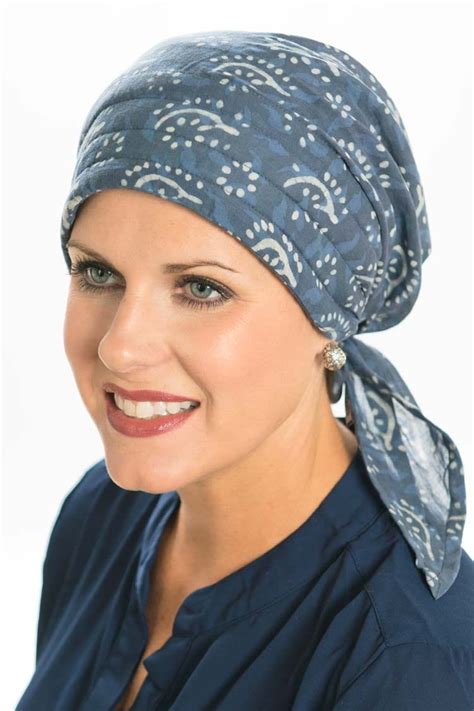Introduction

Cancer treatment often involves hair loss, which can be a significant emotional and physical challenge for patients. Head scarves and wraps offer a stylish and comforting solution, providing a sense of privacy, warmth, and support.
Benefits of Head Scarves and Wraps
Research conducted by the American Cancer Society indicates that up to 90% of cancer patients experience hair loss during treatment. Head scarves and wraps provide a range of benefits:
- Privacy: They conceal hair loss, giving patients a sense of control over their appearance.
- Comfort: Soft and breathable fabrics, such as cotton or silk, provide comfort and reduce irritation.
- Warmth: Scarves can keep the head warm in cold weather, reducing discomfort from chemotherapy.
- Support: Wraps can secure loose skin or prostheses, providing support and confidence.
Choosing the Right Head Scarf or Wrap
When selecting a head scarf or wrap, consider these factors:
- Material: Look for soft, breathable fabrics like cotton, silk, or bamboo.
- Shape and Size: Select a scarf that fits comfortably and covers the desired area.
- Style: Choose a style that complements your face shape and hair color.
- Occasion: Consider the occasion for which you need the scarf, whether it’s a formal event or everyday wear.
Creative Conceptions for Head Scarves and Wraps
Beyond their traditional use, head scarves and wraps can also serve as:
- Eye Masks: Folded wraps can create a comfortable eye mask for sleeping or meditation.
- Neck Warmers: Long scarves can be doubled and worn around the neck for warmth and style.
- Pockets: Scarves can be sewn with pockets to hold small items like keys or a cell phone.
Tables: Head Scarf and Wrap Options
| Type | Material | Shape | Style | Examples |
|---|---|---|---|---|
| Bandana | Cotton | Square or triangular | Classic | Paisleys, prints |
| Snood | Silk | Tube | Modern | Floral, ombré |
| Woven Scarf | Linen | Rectangular | Elegant | Woven patterns, fringes |
| Turban | Velvet | Pre-shaped | Bohemian | Solids, textures |
Effective Strategies for Wearing Head Scarves and Wraps
- Experiment with different styles: Try a variety of wraps and scarves until you find one that flatters your face shape.
- Use clips and pins: Secure scarves and wraps comfortably with hair clips or bobby pins.
- Accessorize with jewelry: Enhance your look by adding earrings, necklaces, or brooches.
- Consider color and pattern: Choose scarves that harmonize with your wardrobe or create a stylish contrast.
Common Mistakes to Avoid
- Wearing tight headgear: Over-tightening scarves can cause discomfort and headaches.
- Using rough fabrics: Scratchy fabrics can irritate sensitive skin.
- Leaving scarves unsecured: Loose scarves can fall off or become uncomfortable.
- Neglecting personal hygiene: Wash scarves regularly to prevent bacteria growth.
Step-by-Step Approach to Tying a Head Scarf
- Choose a scarf: Select a scarf that complements your style and hair color.
- Fold the scarf: Fold the scarf diagonally to create a triangle.
- Place the scarf on your head: Position the center of the scarf on your forehead and let the ends hang down the sides.
- Tie the ends: Bring the two ends of the scarf to the back of your head and tie them together in a knot.
- Secure the scarf: Tuck the ends of the scarf into the knot or use hair clips or bobby pins to secure them.
Conclusion
Head scarves and wraps for cancer patients provide comfort, style, and support. By carefully selecting and wearing these accessories, patients can maintain a sense of privacy, warmth, and confidence during and after treatment.
